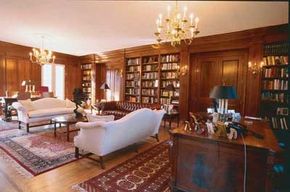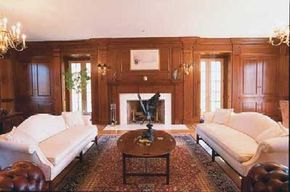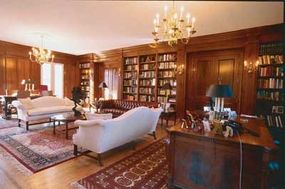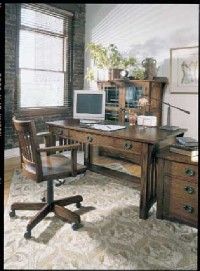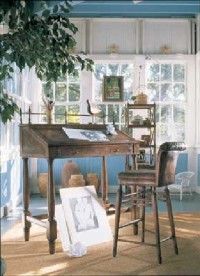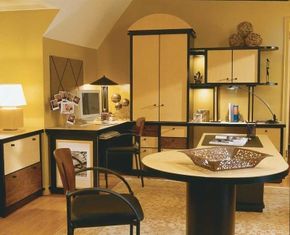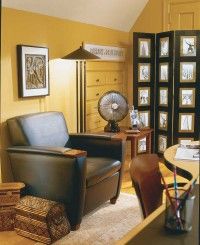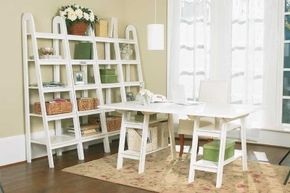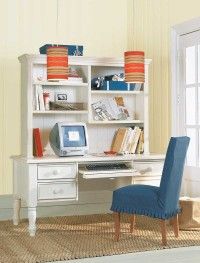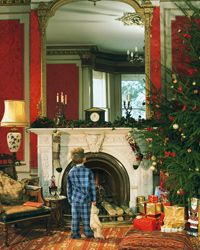Since productivity requires efficiency and organization, home offices should be well-lit; should facilitate the use of computers, faxes, and printing machines; should be stocked with storage; and should be comfortable. Use the volume of work you handle to help calculate how complex a room you need.
An antique table beside a bedroom window will provide a part-time office. Dress it up with pretty pencil and writing paper holders that match the drapes or pillows. Office armoires are another simple solution. Available in styles ranging from classic to Far Eastern, these helpers combine convenience and function. Most feature a keyboard shelf, file drawers, and adjustable shelving. When your tasks are completed, close the doors and the muss disappears.
Advertisement
In this article, you'll learn about decorating styles for home offices, including:
Create a library-office in your home that provides a productive atmosphere for work or a restive place to hide away and read.
Combining the elements of a traditional home office will help you create an industrious atmosphere for your work-at-home needs.
Bring natural light into the office to enhance it's look as well as its effect on your mood.
Building and Using a Custom Home Office
Planning a home office that's tailored to your unique needs can make even the most basic office task an enjoyable prospect. Find tips to make your home office work for you.
Taking the time to figure out your personal office needs will increase both your enjoyment and efficiency in work. Learn tricks to incorporate your style into your home office design.
As you begin planning for your new home office space, keep the following in mind:
Wall-mounted shelves holding art objects and photographs help soften the "office" look, while a series of pieces in the same style and finish such as birch veneer afford a more regimented, corporate look.
Happily, many of today's furnishings have casters for mobility: Roll your desk beside the window when the roses are blooming, and move it closer toward the fire in winter.
Rooms that spend a great deal of time empty, such as dining rooms, make natural offices. Claim the table as work central. When guests are due, tuck paperwork and files in baskets, in a closet, or behind cabinet doors.
Designating one wall to hold gear frees up the rest of the space for other furnishings like chairs and a table for late-night dinners.
Window treatments can be wood shutters, mini-blinds, fabric shades, or drapes. Start a collection according to your theme, and use posters, mechanical drawings, or prints of your interests to decorate the walls. Because you're the boss, your office can have any combination of intriguing materials, furnishings, and colors.
In this article, we'll give you tips for designing a home office library, a traditional home office, and an office that takes full advantage of natural lighting. Let's start with the library. Continue to the next section for helpful decorating ideas.
To get more decorating ideas as well as tips and information on decorating your home, visit:
Advertisement
